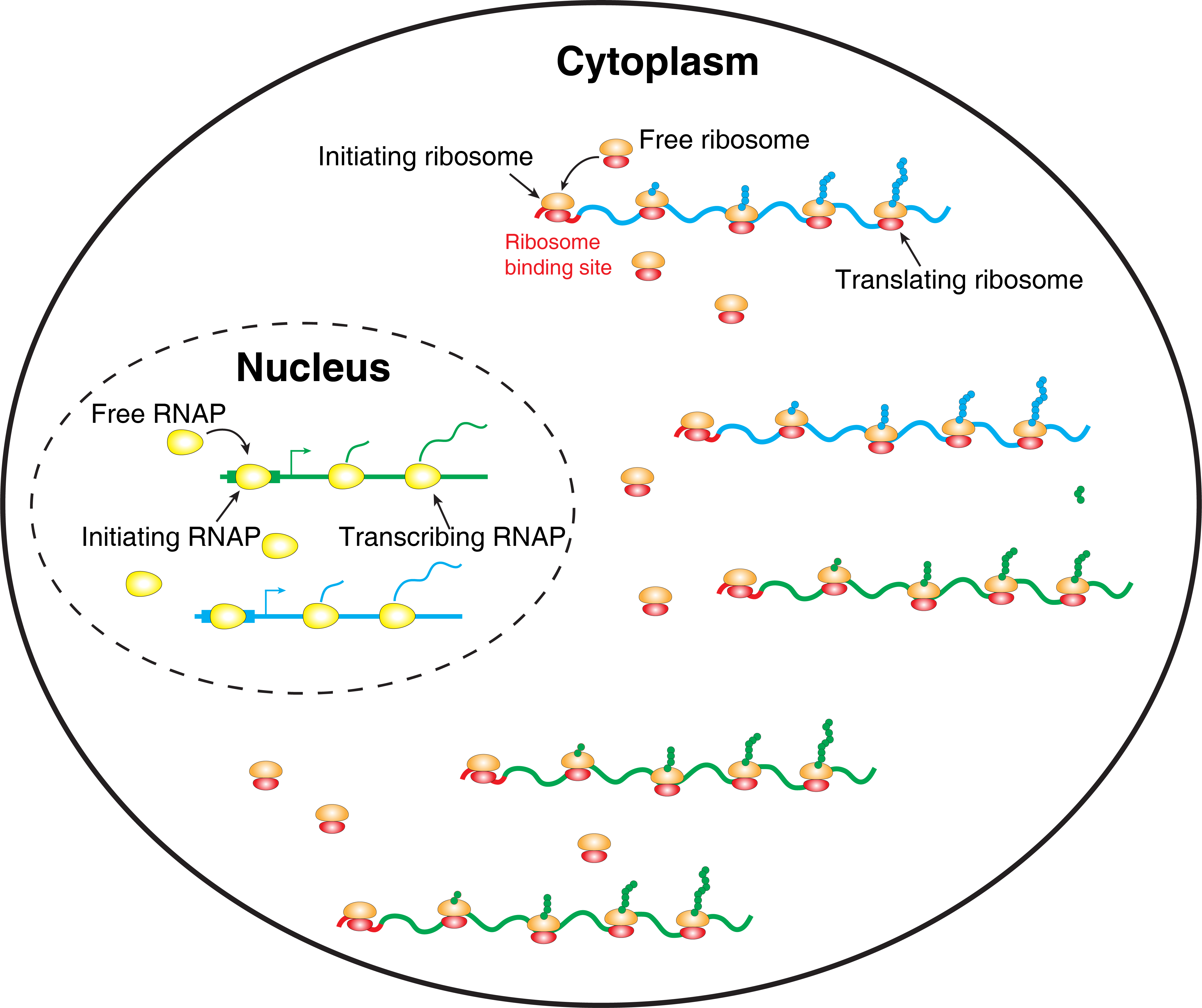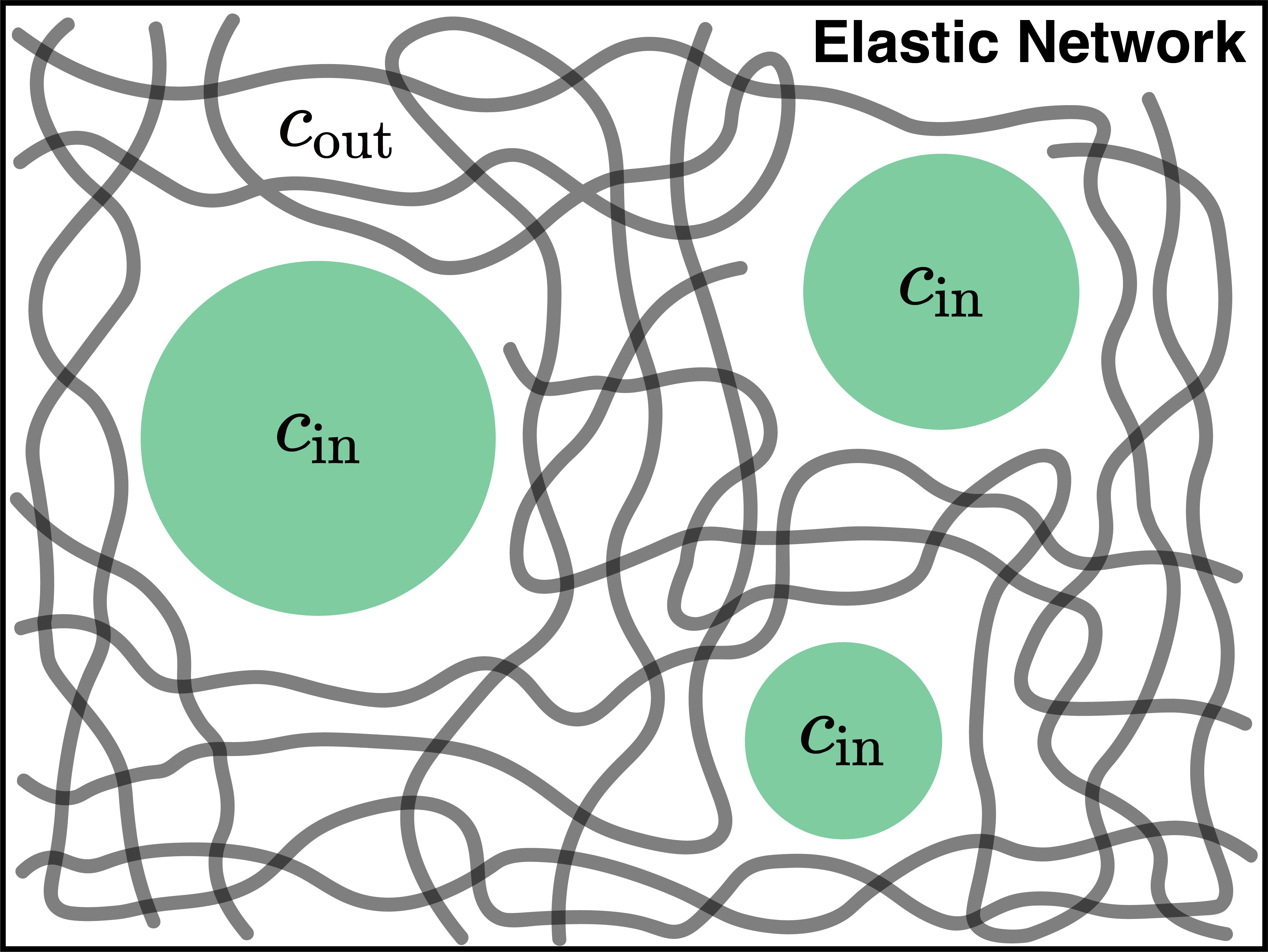Systems biology

Biological processes are complex. Nevertheless, universal and simple laws can emerge at the system levels. For example, protein and mRNA concentrations are typically constant in a growing cell across the genome. We are interested in finding these laws and understanding their mechanisms using the language of physics. Our research interests are broad, including gene expression, cell size regulation, cellular aging, etc. We seek to collaborate with experimentalists and apply our theories to actual data. Our ultimate goal is to find unifying mathematical frameworks to connect biological processes across different levels.
Soft living matter

Soft matter refers to materials easily deformed by thermal fluctuation and external forces, including polymers, liquid crystals, colloids, etc. Living matter, like cells, shares many similarities with soft matter: they can be easily deformed and exhibit complex mechanical responses. The key features that make living matter fascinating are that it constantly consumes energy and is out-of-equilibrium. Living matter also actively responds and adapts to the environment. We are interested in extending our knowledge of soft matter physics to living matter to gain deeper insights into non-equilibrium physics and biology.